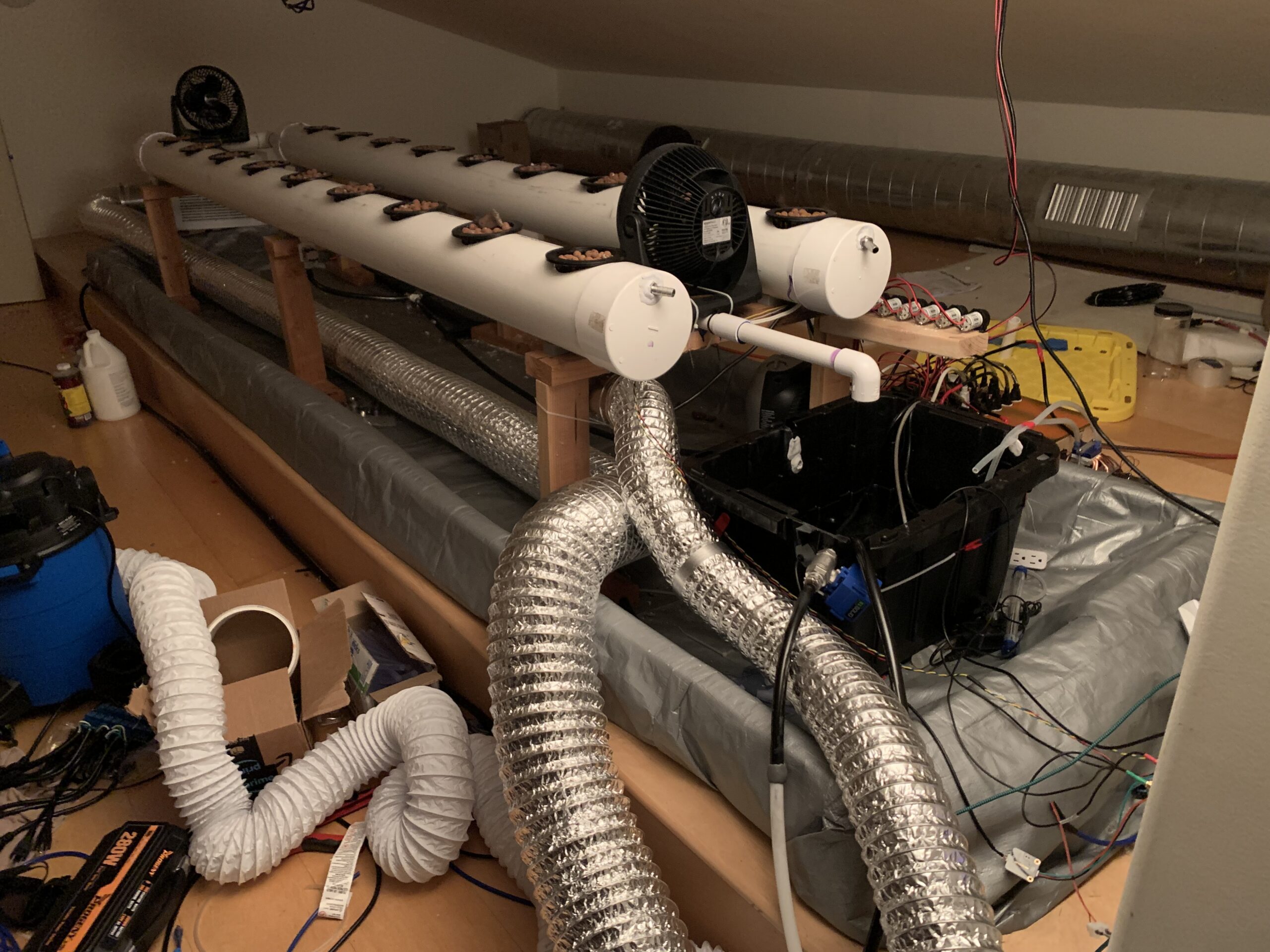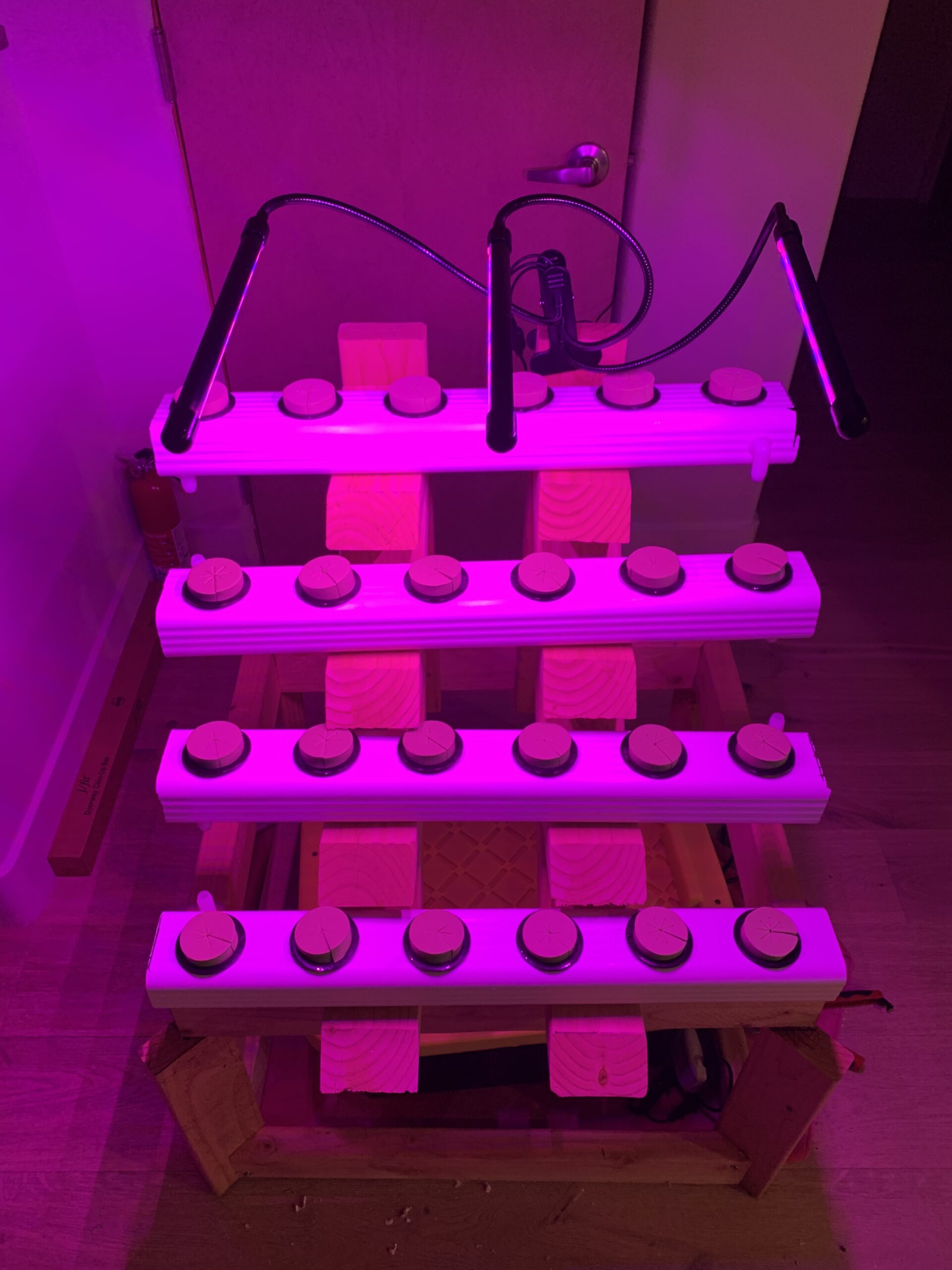Emendation Agriculture
Developing replicable designs for hydroponic agriculture

Background Information
Aidan Burke decided to start Emendation Agriculture to design and create affordable, open source, easy to implement, easily operated, scalable, and sustainable hydroponic system kits that will be provided to communities lacking access to fresh produce, free of charge. He already had some experience with hydroponics after building a prototype system in his attic before attending the Alzar School in Spring of 2021.
Aidan and his friends designed systems that are designed using materials that are low cost yet durable enough to last for years. They focused on designing several versions of the system depending on the food output requirements, space availability, and resource availability. For example, if a community lacks internet connectivity to support remote environmental control through a web server, the friends could design their control interface to instead use a hardwired touchscreen.
“The complexity of automation systems seemed very difficult a few months ago, but I now feel confident in applying my skills to systems that I’ll deliver in communities that need them.” — Aiden Burke
Their systems can utilize small, off grid solar power systems to power their electrical systems, giving them a smaller carbon footprint rendering them independent from
power grids. All of their designs will be completely open-source, meaning that the designs for the systems will be available to the public. Because their systems are open source, anyone can modify the systems,
allowing for continual improvement of the team’s systems.
Implementation of Project
Aidan and his peers found it hard to find enough time to work on the project with the intensity of homework in junior year at an academically rigorous school. To start the project, the friends embarked on a quest for
knowledge by learning how to improve a system that Aidan had built in his attic a few years ago, eliminating leaks and inefficiencies. Doing so allowed them to gain more knowledge regarding both how to repair and design systems to have fewer problem-causing faults to begin with. The friends learned several important lessons such as the importance of building systems using higher quality materials instead of cheaper ones. After learning lessons on a
system that wouldn’t be given to communities needing them, the peers started speaking to a family friend who hopes to include such an example of modern agriculture in a museum being designed for students in the Ventura County school district. The three friends worked on this system focusing on developing a system to display hydroponics technologies and vertical farming in a compact, easily replicable design.
Results of Project
The friends spent most of their time researching and testing ideas out, learning about hydroponics systems through trials and errors that they encountered along the way. They spent around 20 hours together doing this, most of the time learning and implementing automation techniques using affordable electronics. The friends plan to apply some of these automation techniques to future systems that they build. The prototype, which will be delivered to a museum in Ventura County, took around 5 hours to build. This system designed for the museum can grow 24 small plants, like lettuce and chard. It was built to use the cloning technique, meaning that it won’t be necessary to grow sprouts from seed–a cutting can simply be placed in each of the growing spots instead.
What’s Next
Aidan is going to continue working on this project until he graduates. In the immediate future, he will focus on developing his communication skills to find more places to implement hydroponics systems and funding other than his sending school. While the friends that worked on the project were only able to build one system during this semester period, they’re planning on building several larger scale systems in the next semester period and beyond. Aidan is looking to apply the cloning technique to many of the systems that he builds in the future as it saves time and energy in starting a new crop. The same museum that is receiving the display system is interested in two more systems, one in a van to exhibit modern agriculture in places where the museum can’t be reached, and another in a secondary museum location. Aidan has spoken with a school in Tijuana that is interested in such a system to teach students about modern agriculture and have fresh produce for on-campus meals. Aidan is a Junior so he’s not thinking about passing it off to anyone yet, though he might when he leaves for college.





